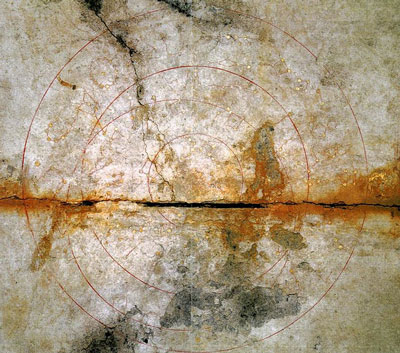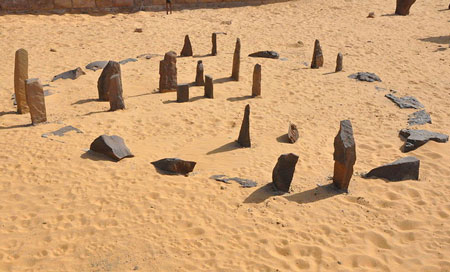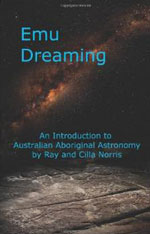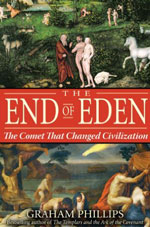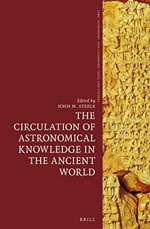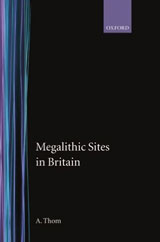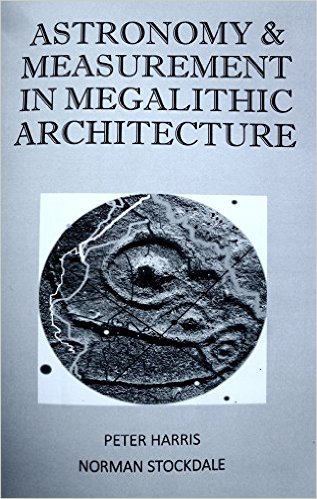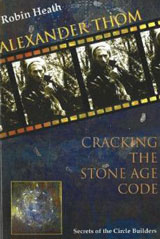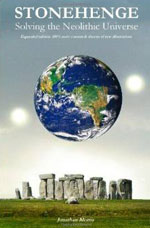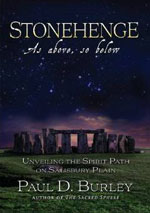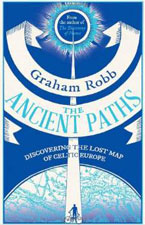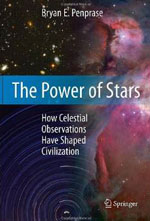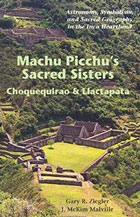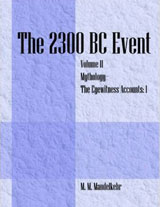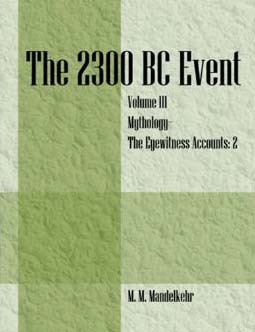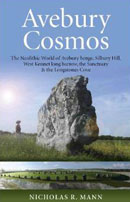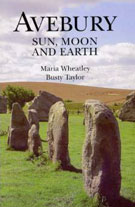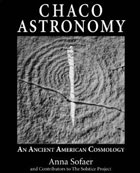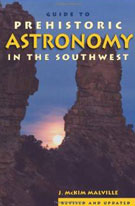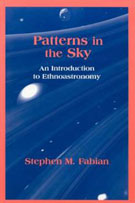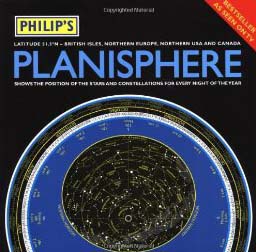|
Then they sliced the bedrock with great precision to create a shallow door that goes nowhere; the same design appears in ancient Persia and Egypt. Then for good measure, they carved an additional altar with three alcoves into an outcrop of bluestone. This sacred site is named Naupa Iglesia, or more accurately, Naupa Huaca. The measurements of the main portal of Naupa Huaca are not random, they conform to musical notation. The length to height ratio is 3:1, making a perfect fifth in the second octave; the ratio of the alcove is 5:6, a minor third. The 5:6 ratio is both unusual and filled with specialist information. It perfectly describes the movement of the Earth, whose pole completes one full rotation of its axis every 25,920 years, while the plane of the equator tilts four degrees every 21,000 years – a ratio of 5:6. This accurate calculation of the motion of the planet is also encoded in another unusual temple, the Bent Pyramid of Egypt, whose slope angles encode the same ratio”
Scientists have long known the Earth’s spin is slowing down – and thus the days are getting longer – because of the dragging effect of the oceans as they are pulled on by the Sun and Moon, called tidal friction. But a study of astronomical records from 720 BC to AD 2015, published in Proceedings of the Royal Society A, has uncovered a small but significant discrepancy between modern calculations and ancient observations. It seems the Earth isn’t slowing down as much as the calculations based on tidal friction would suggest. The study – the most comprehensive analysis of ancient eclipse records gathered to date – brought together astronomers, geophysicists, historians and archaeologists. ‘We use the gravitational theories of the motion of the Earth about the Sun and the Moon around the Earth, so we can compute where and when eclipses should have occurred on the Earth’, astronomer and co-author Dr Leslie Morrison said.”
The site in Mudumal village in Telangana’s backward Mahbubnagar district is being described as the only megalithic site from India, where a depiction of star constellation has been identified. A team of archaeologists from Korea, involving professors from a university, will be visiting the site in December to ascertain the veracity of the discovery, according to officials of Telangana Archaeology Department. A cup-mark depiction of Ursa Major was noticed on a vertically planted squarish stone with a slanting face. An imaginary line drawn through the top two stars – Merak and Dubhe – point to pole star or the North Star. The two cup-marks representing Merak and Dubhe are aligned almost exactly on north-south axis. Just on the eastern periphery of this concentration, there is a stone circle arranged with menhirs alternating with three or four circle stones.”
The site was discovered in Mudumal village in Telangana and is estimated to date back to 5000 BC. No other site in India has so many menhirs concentrated at one place, claim the historians and archeologists who also believe that this is ‘undoubtedly the earliest astronomical observatory found in India or even south Asia’. A cup-mark depiction of Ursa Major was noticed on a squarish stone planted vertically. About 30 cup-marks were arranged in a pattern similar to the appearance of Ursa Major in the sky. Not only the prominent seven stars, but also the peripheral groups of stars are depicted on the menhirs Mudumal contains about 80 big menhirs as tall as 12 to 14 feet, and about 2000 alignment stones of about 1-2 feet high.”
Dr Duane Hamacher is a leader in the study of Indigenous astronomy and has been working with Aboriginal elders at the site to reconstruct their knowledge of the stars and planets. ‘Some academics have referred to this stone arrangement here as Australia’s version of Stonehenge’, he said. ‘I think the question we might have to ask is: is Stonehenge Britain’s version of Wurdi Yuang? Because this could be much, much older.’ If the site is more than 7,000-years old, it will rewrite history and further disprove the notion that first Australians were uniformly nomadic, hunter-gatherers. Scientists believe the arrangement of stones was able to map out the movements of the sun throughout the year.”
The accuracy of its observations, especially the calculation of a kind of ‘leap year’ in the Mayan Calendar, was deemed an impressive curiosity used primarily for astrology. But UC Santa Barbara’s Gerardo Aldana, a professor of anthropology and of Chicana and Chicano studies, believes the Venus Table has been misunderstood and vastly under-appreciated. In a new journal article, Aldana makes the case that the Venus Table represents a remarkable innovation in mathematics and astronomy – and a distinctly Mayan accomplishment. ‘That’s why I’m calling it discovering discovery’, he explained, ‘because it’s not just their discovery, it’s all the blinders that we have, that we’ve constructed and put in place that prevent us from seeing that this was their own actual scientific discovery made by Mayan people at a Mayan city.'”
The research, published in the Journal of Archaeological Science: Reports, details the use of innovative 2D and 3D technology to construct quantitative tests of the patterns of alignment of the standing stones. ‘Nobody before this has ever statistically determined that a single stone circle was constructed with astronomical phenomena in mind – it was all supposition’, says project leader and University of Adelaide Visiting Research Fellow Dr Gail Higginbottom, who is also a Visiting Research Fellow at the Australian National University. Examining the oldest great stone circles built in Scotland (Callanish, on the Isle of Lewis, and Stenness, Isle of Orkney – both predating Stonehenge’s standing stones by about 500 years), the researchers found a great concentration of alignments towards the Sun and Moon at different times of their cycles.”
Have these people never heard of Professor Alexander Thom or any of the many others who’ve followed in his footsteps? – Ed]
‘Hopewell’ refers to a Native American mound-building era that developed from the earlier Adena culture, with both names derived from excavated mound sites on historic plantations. Adena and Hopewell spanned the approximate time frame of 1500 BC to AD 900 and were gradually replaced by another mound culture called ‘Mississippian’. Archaeological research the past few years has shown that many ancient Native American mound/earthwork sites were constructed in a way that facilitated a death ritual that would lead deceased souls to the stars. This ‘Path of Souls’ ritual took place on the Winter Solstice and involved Orion’s Nebula and the Cygnus Constellation. The key alignments for the death ritual on the Winter Solstice were the sunset, the setting point of Cygnus (specifically the star Deneb), and the rising and setting points of Orion’s Nebula. On the night of the Winter Solstice a series of star alignments were viewed. These alignments were typically made from the top of a prominent mound directly across another important mound or an important earthwork point such as an opening or corner of the formation. On the distant horizon and directly above the aligned mound, observers would see the setting and rising of the stars involved.”
The Digital Journal article is well worth a visit to read the full story, and the original article by Dr. Greg Little published in the August 2016 issue of Alternate Perceptions magazine is also a Must Read to see the diagrams with which Dr. Little illustrates his discoveries – Ed]
Ancient passages to stone tombs could have been used by prehistoric humans to boost their view of the night skies as part of an ancient ritual, archaeologists have proposed. Researchers say that the dark entrances to 6,000 year-old tombs in Portugal could have been an early form of astronomical tool that enhanced the visibility of the stars. In particular, they say, the orientation of the entrances to the passage graves suggests that they are aligned to offer a view of Aldebaran, the red star that is the brightest body in the constellation of Taurus. The star might have been important to ancient communities who moved their herds and flocks to summer grazing grounds in the mountains each year.”
For over a century since its discovery in an ancient shipwreck, the exact function of the Antikythera Mechanism – named after the southern Greek island off which it was found – was a tantalizing puzzle. From a few words deciphered on the twisted, corroded fragments of bronze gears and plates, experts guessed it was an astronomical instrument. But much more remained hidden out of sight. After more than a decade’s efforts using cutting-edge scanning equipment, an international team of scientists has now read about 3,500 characters of explanatory text – a quarter of the original – in the innards of the 2,100-year-old remains. They say it was a kind of philosopher’s guide to the galaxy, and perhaps the world’s oldest mechanical computer.”
It even suggests the Egyptians knew what they were working with. Archaeologists and historians have been fascinated by King Tut’s mummified remains and the mysterious objects found in his tomb since their discovery in the 1920s. In the past, scientists have claimed that an iron dagger, found along with a gold blade in King Tut’s tomb, may have come from meteorites. Other ancient Egyptian iron artefacts have also been suspected to be meteoritic, since smelted iron was rarely used.”
First unearthed at Acanceh in Mexico’s Yucatán peninsula in 2002, the observatory is thought to have been used in the Mayan’s early Classic period, between 300 and 600 AD, a millennia or more before the arrival of the Spanish in the Americas. ‘We believe this building used to be a multifunctional facility that was used exclusively by the Mayan elite, specifically for priests-astronomers’, Beatriz Quintal Suaste, a researcher at the Yucatán National Institute of Anthropology and History (INAH), told the Mexico City newspaper Excelsior. Doors in the structure align with the rising and setting of the sun during the spring and fall equinoxes, and the semicircular building is set up so that it casts no shadow in the midday sun. That Venus, the brightest object in the sky after the sun and moon, was important to the priests-astronomers of Acanceh shows in how the southern edge of the observatory, which aligns with the planet’s northernmost position in the night sky.”
William Gadoury, from Quebec, came up with the theory that the Maya civilization chose the location of its towns and cities according to its star constellations. He found Mayan cities lined up exactly with stars in the civilization’s major constellations. Studying the star map further, he discovered one city was missing from a constellation of three stars. Using satellite images provided by the Canadian Space Agency and then mapped on to Google Earth, he discovered the city where the third star of the constellation suggested it would be.”
The wedge-shaped writing on the tablets, known as cuneiform, demonstrated that these ancient stargazers used geometric calculations to predict the motion of Jupiter. Scholars had assumed it wasn’t until almost A.D. 1400 that these techniques were first employed-by English and French mathematicians. But here was proof that nearly 2,000 years earlier, ancient people were every bit as advanced as Renaissance-era scholars. Judging by the story’s enthusiastic reception on social media, this discovery captured the public imagination. It implicitly challenged the perception that cuneiform tablets were used merely for basic accounting, such as tallying grain, rather than for complex astronomical calculations.”
Now, new evidence reveals that these astronomers, working several centuries B.C.E., also employed sophisticated geometric methods that foreshadow the development of calculus. Historians had thought such techniques did not emerge until more than 1400 years later, in 14th century Europe. Astroarchaeologist Mathieu Ossendrijver of Humboldt University in Berlin bases his findings on a re-examination of clay tablets, one of them unknown until recently, dating from 350 B.C.E. to 50 B.C.E. One week each year for the past 14 years, Ossendrijver has made a pilgrimage to the British Museum’s vast collection of tablets inscribed in the Babylonian cuneiform script. Between 2002 and 2008, Ossendrijver, an astrophysicist turned historian, studied two other tablets that also prescribed the drawing of a trapezoid, and in these he thought he could make out a reference to Jupiter.”
Thom had been Professor Emeritus of Engineering at Oxford, and an expert in astro-navigation and surveying, and drew plans for hundreds of ancient monuments prior to publishing his book, ‘Megalithic Sites in Britain’, in 1967. Middle to late-Neolithic stone circles date from about 3,400 to 2,700 BCE, and mainly found in the northern half of the United Kingdom and Ireland. Late Neolithic to early Bronze Age circles, from 2,700 BCE to about 2,000 BCE, are scattered throughout the United Kingdom, with concentrations in Cornwall and Brittany. The most prolific period for stone circle building was in the middle Bronze Age, from 2,000 BCE to 1,200 BCE, and chiefly concentrated in Scotland. Few circles were erected after that, and none are known from later than 1,000 BCE. Despite this separation in time, the complex geometries of some of the flattened circles, egg-shaped rings and ellipses built throughout the entire period were identical and occur in all regions. Alignments to the key stations of the moon through its 18.6-year cycle are commonly met alongside those to the solar and equinoctial sunrises and sunsets. Harris says that while we cannot think of all the structures solely as ‘observatories’, the measures incorporate key astronomical data into monument design.”
This calendar contains lucky or unlucky prognoses for each day of one year. Researchers have performed a statistical analysis of the Cairo Calendar mythological texts. Their analysis revealed that the periods of Algol (2.85 days) and the Moon (29.6 days) strongly regulate the actions of deities in this calendar. ‘Until now, there were only conjectures that many of the mythological texts of the Cairo Calendar describe astronomical phenomena. We can now unambiguously ascertain that throughout the whole year the actions of many deities in the Cairo Calendar are connected to the regular changes of Algol and the Moon’, says Master of Science Sebastian Porceddu.”
A new survey of the Valley of the Temples just outside Agrigento, Italy, reveals the 2,500-year-old temples were not deliberately aligned to the rising sun, as generally believed. A variety of factors, not all of them being astronomical, inspired the ancient architects. ‘Alignment was widely determined by urban layout and morphological aspects of the terrain as well as religious connections’, Giulio Magli, professor of archaeoastronomy at Milan’s Polytechnic University, told Discovery News. Known as the temple of Demeter and Persephone, the shrine is among a World Heritage-listed collection of temples that once stood in full glory in Akragas, later to be called Agrigento. ‘One can only imagine the spectacle at the temple. The full moon near the winter solstice – the longest night of the year – culminates very high in the sky and remains in the sky the longest’, Magli said.”
One piece of the Earthworks is a giant octagon, large enough to fit four Roman Colosseums. Each of the octagon’s points lines up perfectly with specific times in the lunar cycle, pointing to the northernmost and southernmost places where the moon rises and sets. ‘The moon goes through an elaborate cycle, sort of like the sun, in that there’s a solstice and an equinox – it’s the rhythm of the year’, said Bradley T. Lepper, curator of archaeology at the Ohio History Connection. The Newark Earthworks are the largest known complex of geometric earthworks on the planet, according to archaeologists. Radiocarbon dating puts construction at around A.D. 1 to A.D. 400, Lepper said. They cover about 4.5 square miles, and about 7 million cubic feet of earth was used to construct them. ‘And keep in mind that they were building it by hand, with pointed sticks, clamshell hoes and baskets’, Lepper said. ‘And then, carrying those baskets on their backs, one at a time, to create this amazingly precise geometry and astronomy.'”
The metallic globe, which reproduces the motions of the Sun, Moon and planets through the night sky, will be displayed for the first time at an exhibition in Basel, Switzerland, starting on 27 September. The model, built by Michael Wright, a mechanician and a former curator at the Science Museum in London, is largely the product of erudite guesswork. But astrophysicist Mike Edmunds of Cardiff University, UK, says that it demonstrates that ancients could have been capable of building such a device. Modern scholars have generally assumed that Archimedes’ sphere — if it existed — displayed astronomical positions on a flat dial. But Wright thinks that it was a 3D globe, and has built the model to demonstrate how it could have worked.”
The research project is the result of several years of collaboration between the Institute of Archaeology of the University of Warsaw and Bornholms Museum. As part of the agreement, archaeology students of IA UW come each year to the Danish island for excavations and practice their skills. The study site – Vasagard – puzzles archaeologists to this day. It was probably the site of a sun worship temple, surrounded by palisades. This is evidenced by the entrance to the complex, located in the direction of the sunrise during the solstice or equinox.”
The star chart in the stone chamber of the Kitora Tomb, a government-designated special historic site in Asuka village, was discovered in 1998. The tomb was believed to have been constructed between the late seventh century to early eighth century, and is renowned for its richly colored murals. The star chart features 68 constellations depicted with gold discs. Three concentric circles, along with one representing the apparent path of the sun, portray the movement of celestial objects with the Polar Star at the center.”
They are the result of an advanced urban community that arose approximately 11,000 years ago, and left behind a huge assembly of stones, which have been labelled by scientists as the oldest known astronomical alignments of megaliths in the world. Some archaeologists believe that the people of Nabta Playa were the precursor civilization for the first Nile cities that arose in Egypt thousands of years later. The ancient remains of Nabta Playa were first discovered in 1974 by a group of scientists led by Fred Wendorf, an Anthropology Professor from the Southern Methodist University in Texas, when they noticed potsherds and other artifacts sticking out of the desert sand. Wendorf made several more visits to the site during the 1970s and 1980s, each time discovering something new. But it was to be several decades before researchers discovered the dozens of stone structures that are known today, and began to realize the role and importance of these great megaliths.”
Historians have long known the circle of stones is aligned with the midsummer sunrise but Tim Daw says the tallest one is lined up with the midwinter sun. It was previously thought the stone had been put back at the wrong angle when it was re-erected in 1901. But Mr Daw, who works there, says his research shows its angle is deliberate. ‘The stones point to the midwinter solstice sunrise and midsummer sunset’, he said ‘This isn’t some nebulous sighting line on a distant star; this is 100 tonnes of stone deliberately pointing to the major event at the other end of the day the rest of the monument celebrates’.”
Dr Duane Hamacher from the UNSW Indigenous Astronomy Group has uncovered evidence linking Aboriginal stories about meteor events with impact craters dating back some 4,700 years. Dr Hamacher, an astrophysicist studying Indigenous astronomy, examined meteorite accounts from Aboriginal communities across Australia to determine if they were linked to known meteoritic events. His study, published in the latest edition of peer-reviewed journal Archaeoastronomy, found ‘definitive links’ between known meteorite craters and local Aboriginal traditions. One of the meteorite strikes, at a place called Henbury in the Northern Territory, occurred around 4,700 years ago. Dr Hamacher said the level of detail contained in the local oral traditions suggested the Henbury event had been witnessed and its legend passed down through generations over thousands of years – a remarkable record.”
The origin and purpose of the taulas is unknown, although they are the works of prehistoric humans. There have been several theories surrounding the mystery of the taulas, generally focused on religious or astronomical purposes. Some believe they are a religious symbol. Others believe the taulas served as a temple of healing. Finally, there is a theory that the taulas were aligned with the movements of the moon.”
If you could stay in that spot, in the waterway, for the entire day, the sun would appear to move behind you and then set in alignment with another pavilion, to the northwest. The mausoleum and minarets of the Taj Mahal are located between those two pavilions, and the rising and setting sun would appear to frame them. Although standing in the waterway is impractical (and not allowed), the dawn and dusk would be sights to behold, and these alignments are just two among several that a physics researcher recently discovered between the solstice sun and the waterways, pavilions and pathways in the gardens of the Taj Mahal. The summer solstice has more hours of daylight than any other day of the year, and is when the sun appears at its highest point in the sky. The winter solstice (which usually occurs Dec. 21) is the shortest day of the year, and is when the sun appears at its lowest point in the sky. Amelia Carolina Sparavigna, a physics professor at the Polytechnic University of Turin in Italy, reported the alignments in an article published recently in the journal Philica.”
The research was carried out by the SB Research Group (SBRG), an international and interdisciplinary team of researchers (from Italy, Croatia, Serbia, Finland and United Kingdom) that combines astronomy, philosophy, mythology, mathematics and physics in the study of ancient sites and temples in Europe. The SBRG combined multiple methods, including infra-/ultrasound research, AMT measurements, binary algorithm synthesis from audio waves, data sonification, and dowsing, to study the ancient geoglyph and hill, which is located in the vicinity of the town of Sveti Nikole in Kanda. The hill is an egg-shaped mound, perfectly oriented North-South, measuring approximately 85 meters (280ft) by 45 meters (148ft). On top of the hill is a geoglyph of a giant symbol sitting within an oval ditch. ‘The whole structure, with its shape and symbolism, resembles a cosmic egg – the source of primordial creation’, reports the research team in a paper titled “Archaeoacoustic analysis of the ancient site of Kanda (Macedonia)”. Intriguingly, the constellation of Cassiopeia lies directly to the north and stands vertically above the geoglyph in the skies zenith at sunrise on 21/22 July (the birth date of Alexander the Great).”
In astronomical terms, this is the shortest day of the year, when the sun is at its lowest in the sky. After the solstice, the days begin to get longer again, and it is for this reason that it was celebrated as the beginning of a new year by pagan cultures. This monument is an astounding feat of engineering: dating from around 3,200 B.C. (that’s older than the Pyramids!) it is aligned exactly with the rising of the midwinter sun. Above the entrance to the tomb there is an opening called the roof-box. On 21st December, the light of the rising sun passes through the roof-box and travels up the narrow passage, illuminating the inner chamber.”
Archaeologists on the expedition had their hands full with far more impressive finds, including life-size statues of warriors and horses, delicate glass bowls and scores of ceramic vessels called amphorae. Decades would pass before scientists realized that the nondescript bronze – now called the Antikythera Mechanism – was the biggest treasure of all. The device consisted of a series of intricate, interlocking gears designed to predict eclipses and calculate the positions of the sun, moon and planets as they swept across the of the sky. The machine exhibited a level of technological sophistication no one dreamed was possible when it was built, at least 2,000 years ago. Europe produced nothing to equal it until the geared clocks of the Medieval period, more than a thousand years later. Some scholars describe the Antikythera Mechanism as the world’s first analog computer.”
The fort had four gateways facing one another. During the summer solstice, the sun would rise in alignment with the fort’s northeastern and southwestern gates, and set in alignment with its northwestern and southeastern gates, the researcher reported in the new study. During the winter solstice, the sun would rise in line with the fort’s southeastern and northwestern gates, and set in line with the fort’s southwestern and northeastern gates. ‘Moreover, the four towers of the garrison seem aligned to cardinal directions’, Amelia Carolina Sparavigna, a physics professor at the Politecnico di Torino (Polytechnic University of Turin) in Italy, wrote in the study, published Dec. 17 in the journal Philica.”
The rest of the artifacts, along with the shape of the boat, suggested a date around 2000 years ago, which made the find one of the most anomalous that had ever been recovered from the Greek seas. It became known as The Antikythera Mechanism. In 2006 the journal “Nature” published a letter, and another paper about the mechanism was published in 2008, detailing the findings of Prof. Mike G. Edmunds of Cardiff University. Using high-resolution X-ray tomography to study the fragments of the anomalous Antikythera Mechanism, they found that it was in fact a bronze mechanical analog computer that could be used to calculate the astronomical positions and various cycles of the Moon – as seen from the Earth: – Ed]
|
Get This Book From:
Civilizations in Anatolia and Greece, through Egypt and the Middle East, and eastward to India and Central Asia were at their height. The collapse of these civilizations due to earthquakes and climatic changes has been mirrored by similar interruptions on all continents, in the Arctic, and extending to the Pacific. The discontinuities have long puzzled archaeologists and historians. New religions and accompanying mythologies appeared at this time in all cultural regions describing bombardment and flooding from the skies. Strangely, the dominant aspect of the mythologies, however, is the observation and worship of a ring appearing to surround the Earth, oriented to the two Ursa (Bear) constellations.”
Simultaneous with the meteoroid fall was a huge downpouring of water which caused flash flooding. Extensive destruction and loss of life resulted. An astonishing aspect of the event was the formation of a ring surrounding the Earth, reflecting sunlight during the day, hiding some stars at night, and moving around the sky through a 24-hour period. Following the ‘main event’, there were crustal movements which shifted the location of water sources, and caused earthquakes which destroyed settlements. Abrupt severe climate changes occurred.”
The Earth’s encounter with a dense cluster of large objects would produce atmospheric phenomena very different from the pleasant and interesting night displays of meteor trails that are within our own experience. The rain of objects would have generated extraordinary visual and auditory effects combined with ground vibrations; and under extreme conditions would bring about severe surface destruction and loss of life. The overall event was associated by the people with powerful deities and formed the basis for major religions. The mythologies and traditions are, in large part, the residues of those religions.”
by Get This Book From:
Mann throws light on the motive behind the creation of its awe-inspiring mounds and megaliths by demonstrating that they were aligned to the cycles of the Sun, Moon and stars. This book will help visitors and readers to see Avebury in a wholly new light – the light of the heavenly bodies that guided its Neolithic builders.”
The discovery proposed a cosmology at Chaco, and the book looks at the people who lived in the San Juan Basin from 850 AD to 1300, developing an elaborate culture around the cycles of the sun and moon. Anna Sofaer’s pioneering work on Chaco Canyon, a World Heritage Site, should be required reading for anyone interested in how the prehistoric people of the American Southwest conceptualized their universe and placed themselves within that universe.”
Even a reader with little or no background in archaeoastronomy will like this book. One reason is the tons of good photos and diagrams that can help anyone better appreciate the miraculous order of our solar system and the stars. It would make a great gift for children between 10 and 16, potentially stimulating them to enter the field of science.”
This compelling short work helps students fully understand and appreciate the ways in which non-Western indigenous and small-scale societies perceive, conceptualize, and make sure of what they astronomically observe. With its concise explanations of prominent astronomical phenomena, discussions of relevant crosscultural examples, and instructive suggestions for active field research, Patterns in the Sky is a unique and practical guide for doing ethnoastronomy. In addition, Fabian offers exercises in observational astronomy with the naked eye so that students can get in touch with the cosmos and natural world around them.”
|
